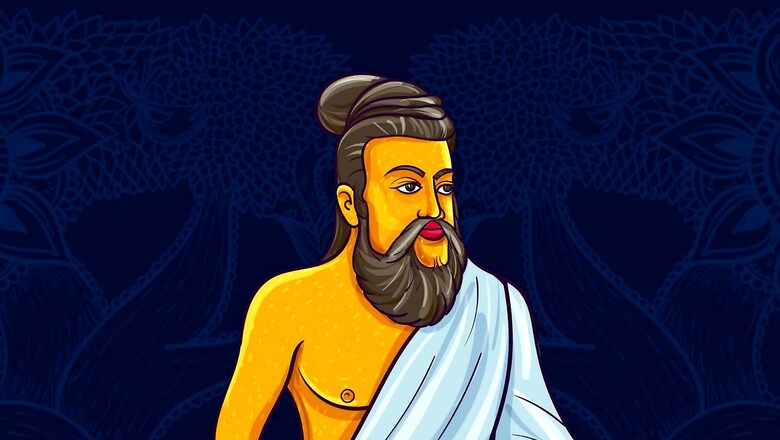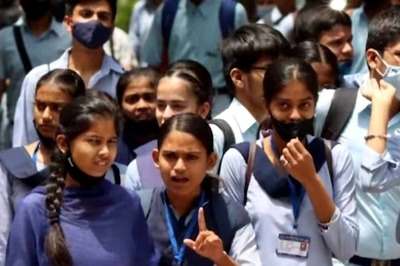
views
Indian contributions to understanding international relations, while phenomenal in substance, are still underappreciated in the Western discourse. Amongst many texts on statecraft, diplomacy and international relations, Tirukkural or Kural figures are in the list of most important intellectual and historical contributions. The importance of this literary masterpiece has withstood the test of time and societal transformations focusing on key issues such as leadership and justice.
Divided into three sections, Kural presents a set of principles for both the individual and the state: virtue (Aram), government or polity (Porul), and love (Inbam). Believed to have been written in classical Tamil between the second century BC and the eighth century AD, these books illustrate Tiruvalluvar’s skill at compartmentalising worldly priorities while also indicating that one or two books may be prioritised over others depending on their importance to the reader. Thus, unlike Chanakya’s Arthashastra, which is arguably the oldest realist text on international relations, Tiruvalluvar’s Tirukkural is not focussed on statecraft alone and covers varied aspects of human life.
India’s eastward engagement since antiquity, which led to important civilisational exchanges and cultural diffusion over millennia, resulted in several great literary texts from ancient and modern India reaching the Southeast Asian region and subsequently being translated into local languages. The Kural has been translated into English, Bahasa Melayu, Thai, Bahasa Indonesia and Burmese. It also comes as no surprise that the literature has been incorporated into modern philosophy and education, given its didactic nature.
In the 21st century, the Kural has made its way into popular culture. During the 1980s and 1990s, we remember the late filmmaker K. Balachander’s Kavithalayaa Productions’ title introduction featuring an image of Tiruvalluvar bearing the words “Agara Mudhala Ezhuththellaam Aadhi Bhagavan Mudhatre Ulaku” which means “As the letter A is the first of all letters, so the eternal God is first in the world”. This is the Tirukkural’s first Kural (couplet) from the very first Adhigaram (chapter). Even more recently in the song “Mannipaaya” from director Gautham Vasudev Menon’s hit film Vinnaithaandi Varuvaayaa, lyricist Thamarai skilfully weaves in three different Kurals in one of the choruses, “Anbirkum Undoa Adaikkundhaazh Aarvalar Pun-Kaneer Poosal Tharum; Anbilaar Ellaam Thamakkuriyar Anbudaiyaar Enpum Uriyar Pirarkku; Pulappal Enachchendraen Pullinaen Nenjam Kalaththal Uruvadhu Kandu” (Adhigaram 8, Kural 71; Adhigaram 8, Kural 72; Adhigaram 126, Kural 1259).
Despite its visibility and influence in literature, education and popular culture, a lesser-known and explored aspect of the Kural is its Book II or Porutpal on polity and statecraft. Largely accepted as a moral and educative text, the strategic nature of Valluvar’s Kural often goes unnoticed. In fact, the value of polity and statecraft discourse in the Kural becomes that much more apparent through accounts of loose similarities between the Kural and the Arthashastra – which is said to have guided the rule of the Maurya empire. This ‘inattentional blindness’ to the Porutpal could possibly be due to the challenge of contextualising its elements in modern society. However, if applied to ancient history, in the words of renowned Indian historian K.A.N Sastri, “the Kural, with chapters dedicated to a systematic treatment of the affairs of state may be accepted as a safe guide to the prevailing theory of the time” and that “no better method can be availed of to understand the nature of Tamil monarchy in the Sangam period than to discuss some salient statements of Tiruvalluvar on the subject.”
In explaining the nature of polity, the Kural introduces six elements which are subject to the king, “Padaikuti koozh-amaichchu natparan aarum utaiyaan arasarul eru” meaning “He who possesses these six things, an army, a people, wealth, ministers, friends and a fortress, is a lion among kings” (Adhigaram 39, Kural 381). In other respects, the concepts of polity gain clarity and precision through Valluvar’s Kural. The ten verses (Kurals 731-740) in which Valluvar deals with the essentials of Nadu (state) are a clear-cut analysis of the physical basis of the state’s life. The Kural also emphasises on the importance and glory of the right and just rule of the king. In fact, in his work “The Cōlas”, K.A. Nilakanta Sastri hints that the Cholas, an ancient Indian empire (now immensely re-popularised by Mani Ratnam’s 2022 film Ponniyin Selvan I) had a strongly guarded treasury, thus heeding the advice of Kural 552.
Beyond ‘local’ governance, the beauty of the Kural lies in its multiple insights on interstate relations. Kural 679 and 680 from Adhigaram 68 are on strategic alliances, “Nattaarkku Nalla Seyalin Viraindhadhae Ottaarai Ottik Kolal” (One should rather hasten to secure the alliance of the foes than perform good offices to one’s friends); “Uraisiriyaar Ulnhatungal Anjik Kuraiperin Kolvar Periyaarp Panindhu” (Ministers of small states, afraid of their people being frightened, will yield to and acknowledge their superior foes if the latter offer them a chance of reconciliation). Kural’s explanatory power in sufficiently elucidating small states’ behaviour can be witnessed in ASEAN’s (and its members’) relentless efforts to make peace with China on the South China Sea dispute. This is noteworthy, as this indicates Kural’s value and potential contribution to international relations of Southeast Asia – or in this case, non-Western International Relations Theory (IRT).
While non-Western contributions to IRT exist, they are generally accused of not meeting the criteria for a hard theory that can clinically segregate a state’s affairs from that of an individual and society. But then, is a state really so drastically different from its society that it does not even represent its essential cultural, social, and normative features? The answer, albeit subdued, is no! True, Asian and non-Western countries are more accommodative and reflective of their historical and cultural nuances, but the Western world too is not totally agnostic about it.
Asian classical traditions and the thinking of towering thought leaders such as Chanakya, Sun Tzu and Confucius represent a part of the non-Western world just as Machiavelli, Kant, Grotius, and Locke tell us a great deal about the Western world. Considering the growing interest in non-Western international relations literature, and the rise of non-Western powers, it is about time that the Kural too, is systematically studied and given its due place in the evolving discourse on non-Western and global international relations debates.
*Thiruvalluvar Day, a state holiday in Tamil Nadu and Puducherry, India is usually celebrated either on the 15th or 16th of January. The day is observed as a mark of respect for Valluvar’s immense literary contributions.
Rahul Mishra is Director, Centre for ASEAN Regionalism Universiti Malaya (CARUM), Asia-Europe Institute, Universiti Malaya. He tweets @rahulmishr_; Yanitha Meena Louis is a Doctoral candidate at the Asia-Europe Institute, Universiti Malaya and Researcher at the Institute of Strategic and International Studies (ISIS) Malaysia. Views expressed are personal.
Read all the Latest Opinions here
















Comments
0 comment